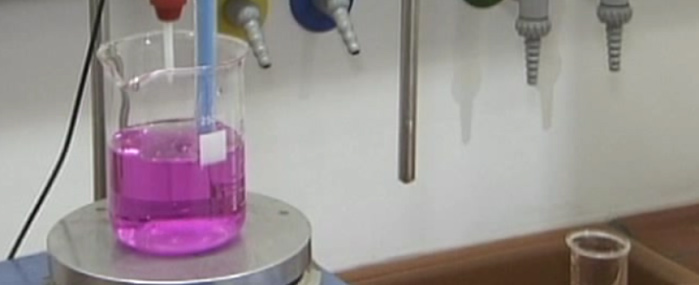
Direct Links:
Extraction
For the extraction of a dissolved compound a separatory funnel, a conical glass apparatus with a Teflon valve and a ground glass joint, is used. The solution of the target compound and an additional, immiscible solvent are filled into the funnel. By the shaking, a maximum contact between the two phases is accomplished and the solubility equilibrium is reached faster. While shaking, the funnel should be vented several times through the valve, as an overpressure occurs frequently. Afterwards, the two phases can be separated. It is recommended to repeat this procedure several times to avoid wasting any product. Additionally, it is advantageous to repeat the extraction more often with small amounts of solvent than to do it fewer times with larger amounts as the yield will be higher. While extracting an aqueous solution the organic layers will be enriched with water, so usually it is necessary to dry the organic phase above a desiccant, e.g. magnesium sulfate.
A method of extraction is the Soxhlet extraction; it is applied to extract soluble compounds from a mixture of solids. A Soxhlet apparatus consists of a Soxhlet extractor and a reflux condenser which is placed on top of the extractor. Both of these compounds are mounted on top of a flask. The solvent, in which the target substance should be soluble, is filled into the flask and is heated to reflux. When condensing at a reflux condenser, the solvent drips into the Soxhlet extractor and starts dissolving any soluble compound in the solid - thus any impurities have to be insoluble. Through a side arm of the extractor the solvent can run back into the flask and the process can be continued until any soluble compound has been extracted and transferred to the bottom flask.